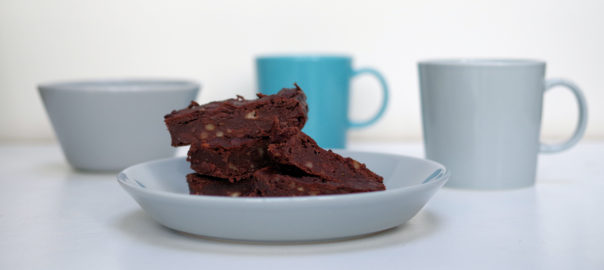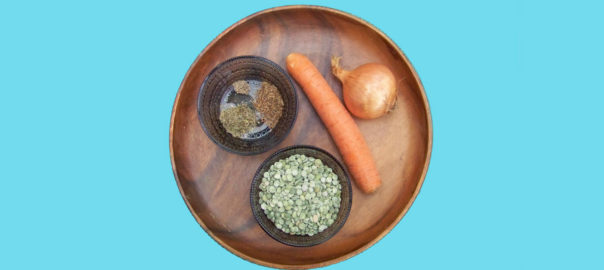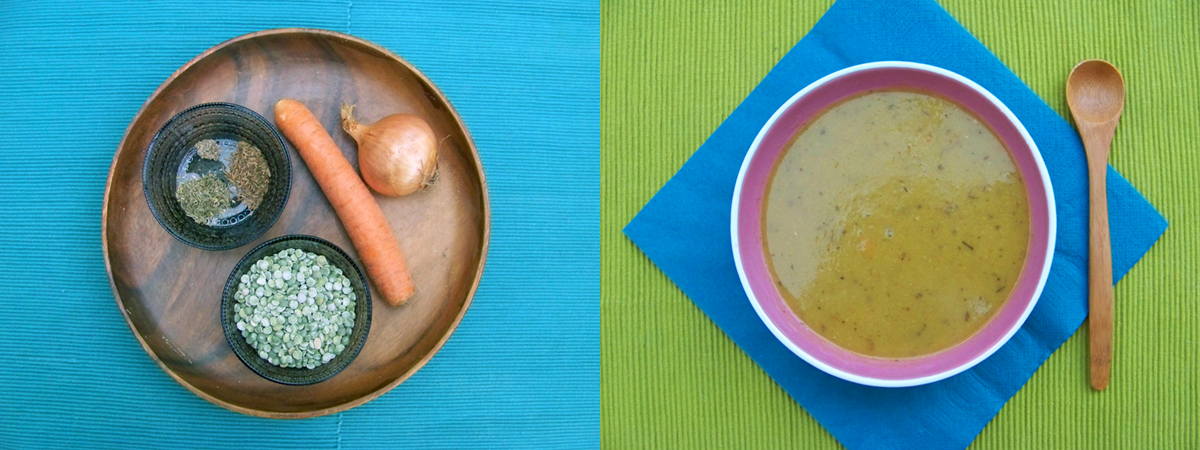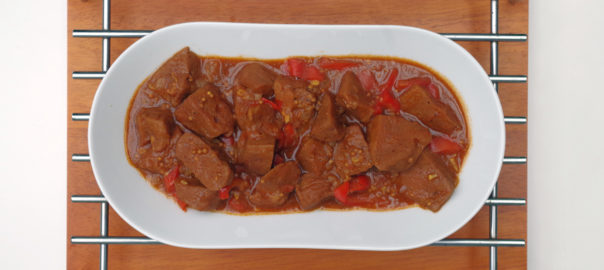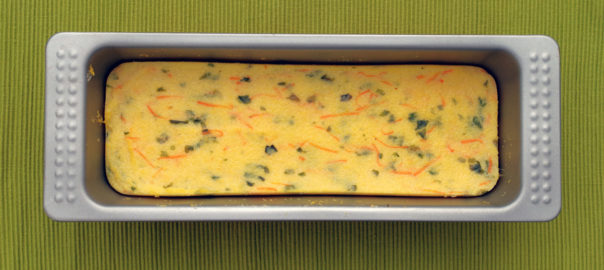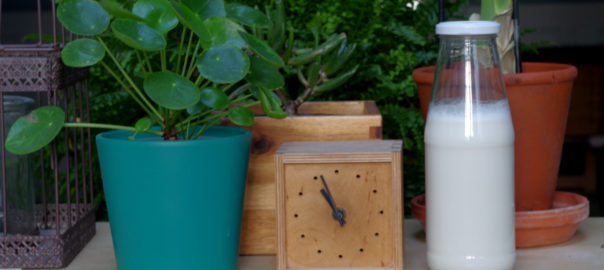Yoga Kitchen – Simple, healthy, and plant-based
Brownies without eggs or dairy products
Black beans are the secret protein source of this recipe. If you are working with dried black beans, soak them for 24 hours and then boil them soft. For this recipe, assume about 80 g of dry beans. Put the beans in a pan, cover with water and bring to the boil. Do not add salt to the cooking water.
Even better: use a pressure cooker, then they will be done in 25 minutes. In an ordinary saucepan, they need 45 to 60 minutes to cook. Add water now and again as it evaporates. But if you are a bit on the lazy side, you can also use canned black beans, which are soft, pre-cooked and ready to be eaten.
Why without eggs?
Who needs eggs? Eggs and egg powder are used abundantly in industrial pastry. Modern egg production is harmful and cruel to chickens, even if the eggs are supposedly from organic origin. Unless you care for your own chickens and entitle them to a dignified old age once they have stopped laying eggs, there are plenty of healthier and cheaper alternatives:
- Like a simple banana.
- Or apple sauce
- Or a tablespoon of crushed flaxseed that you soak in two tablespoons of water.
The absence of eggs in this recipe means you can lick the leftover batter off your scraper without feeling guilty. There is no risk of salmonella infection, which can occur when you eat raw eggs.
With or without gluten?
You can also use a gluten-free type of flour in this recipe. Gluten-free flours such as millet, buckwheat, corn or soy are easier to digest for most of us. But you can also use a five-grain mix or whole-wheat spelt flour for a classic version with gluten. Many of today’s nutritionists say that modern, industrial wheat is best avoided. As far as pesticides are concerned, I agree with them. Personally, I think it is best to listen to your body’s reactions. Good wheat or spelt of organic origin (i.e. without pesticides) is OK in itself. Those grains also contain a lot of vegetable protein of good quality.
What you need for a small cake (approx. 350g):
- One large, ripe banana. The riper, the better
- Aproximately 120g rinsed black beans, soft boiled or canned. Aduki beans are also very good
- 3 tablespoons of neutral-tasting vegetable oil that can withstand heating, e.g. high oleic sunflower oil
- 1 teaspoon of ground vanilla (optional)
- 6 soft mazafati or medjoul dates
- 4 leveled tablespoons unsweetened pure cocoa
- 2 teaspoons of baking powder
- 40 to 45 g flour (buckwheat or millet flour for the gluten-free version of this brownie)
- a pinch of sea salt.
- 1/2 cup (about 40 g) coarsely chopped walnuts (other nuts will do too)
- 1/2 cup (about 60 g) vegan black chocolate drops (optional)
It is always a good idea to soak the nuts in water overnight. The nuts revive, the bitterness disappears and they taste like they have just been picked fresh from the tree. They are also much more digestible. Discard the soaking water and rinse the nuts well.
It is done in a jiffy, really:
Preheat the oven to 180°C/340°F.
- Place the beans, oil, dates and banana in a food processor and mix well, first slowly and then at higher speed.
- Add the vanilla and then the cocoa. Puree everything well. The result is a rather liquid, moist glossy dark brown mixture.
- Mix together the dry ingredients: the flour, the baking powder and the pinch of salt.
- In the food processor, gradually mix the dry ingredients into the wet mixture until the mixture becomes a little drier, but still creamy and moist.
- Spoon the contents of your food processor into a mixing bowl.
- Then add the chopped nuts and chocolate drops. Mix roughly.
- Finally, transfer everything to a low rectangular, square or round cake tin or baking tray covered with kitchen paper.
Bake for about 25 to 30 minutes. The brownie tastes best when it is still slightly moist inside. (A larger cake needs to bake a little longer).
Enjoy! With healthy and respectful ingredients like these, chocolate cake becomes healthy food full of love for the whole planet!
Black Bean brownies / Approximate nutritional value per 100 g of product:
| Energy | Carbohydrates | Sugars | Fat | Sat. fat | Protein | Fibre | Salt |
|---|---|---|---|---|---|---|---|
| 1098,40 kJ/262,35 kcal | 34,12 g | 14,56 g | 13,55 g | 2,60 g | 7,21 g | 7,44 | 0,09 g |
Read more about plant-based nutrition and health:
Find more articles about nutrition, health and plant-based foods:
Read more about plant-based food
Read more about yoga and yoga classes in Schaerbeek:
Check out our yoga classes here:

